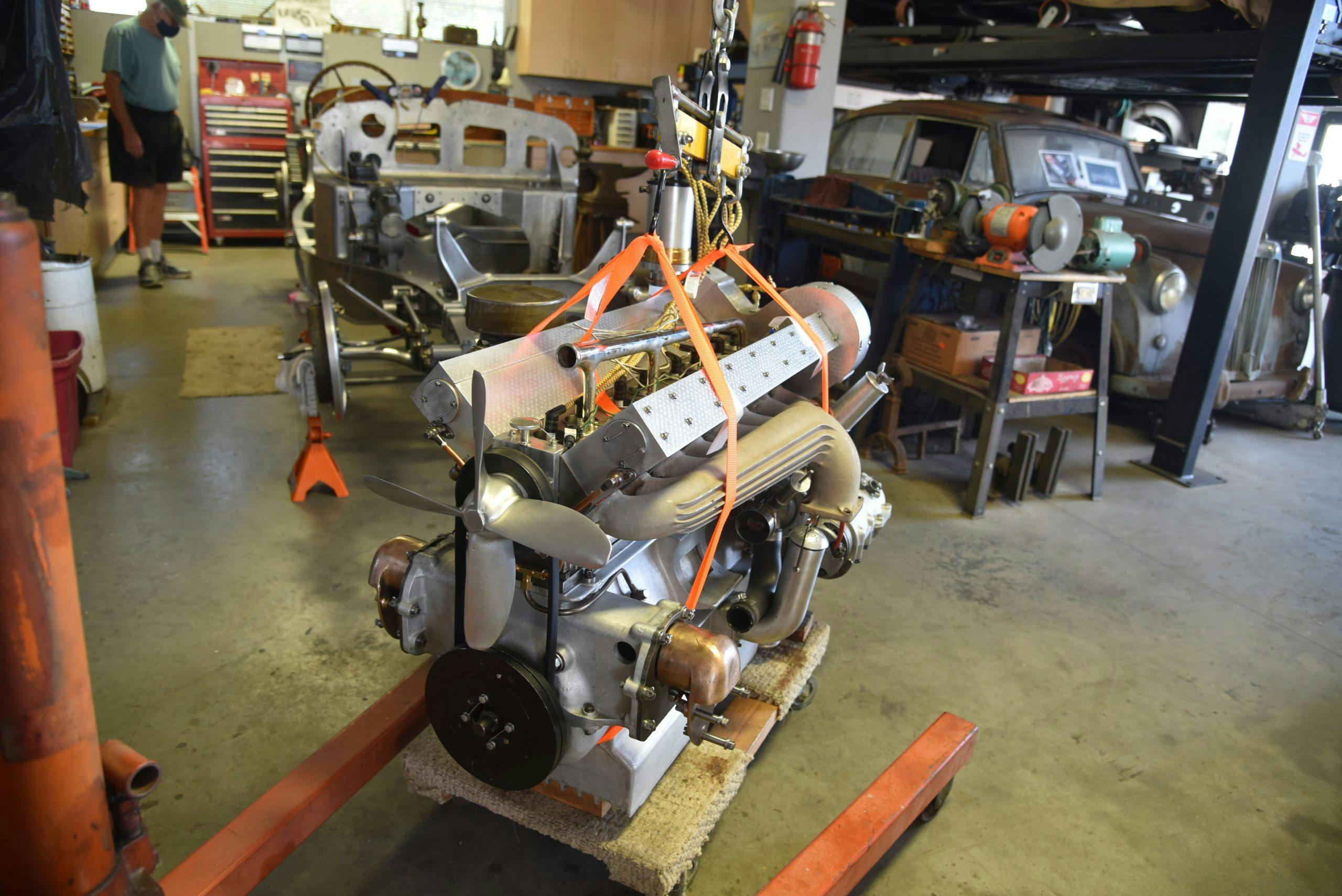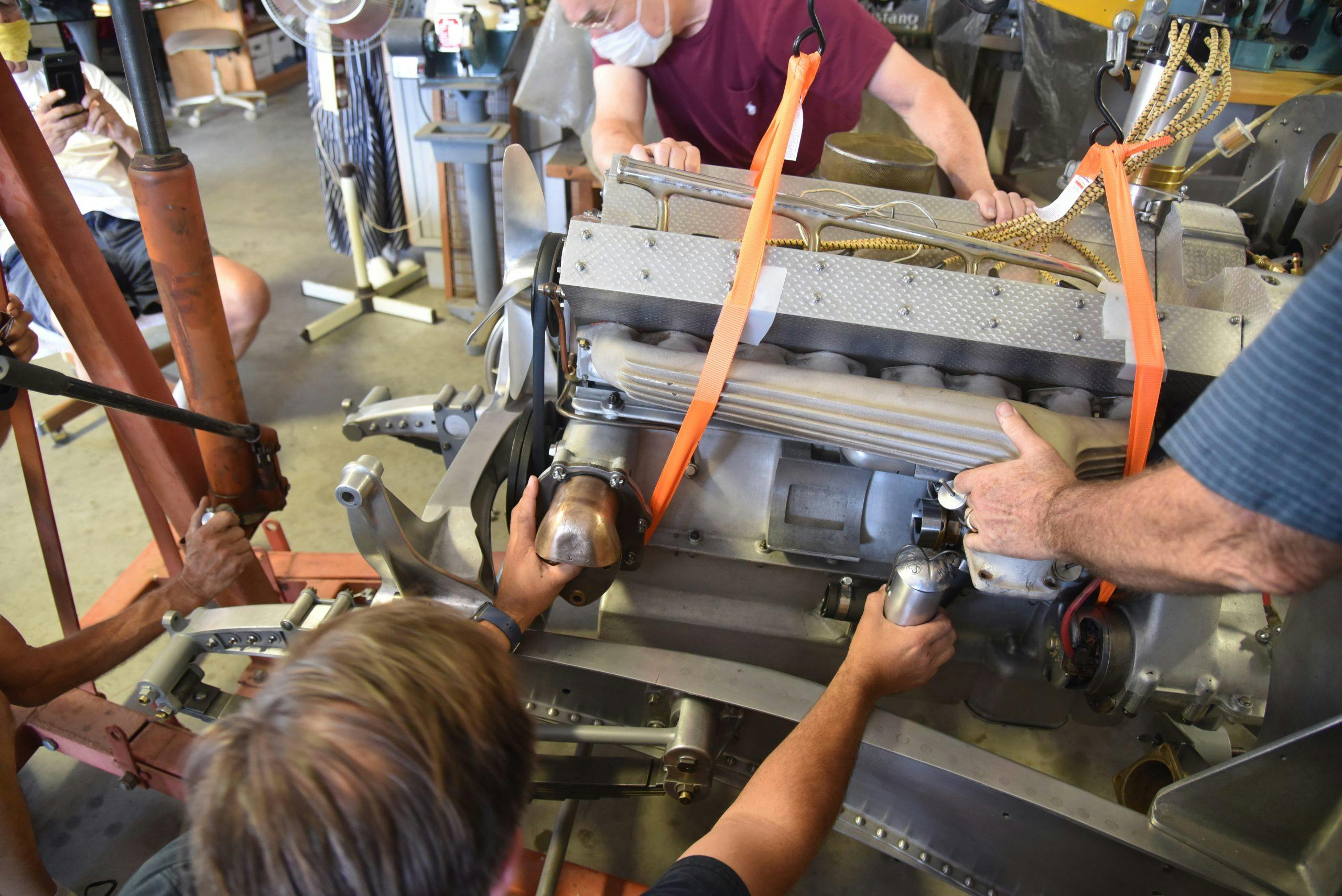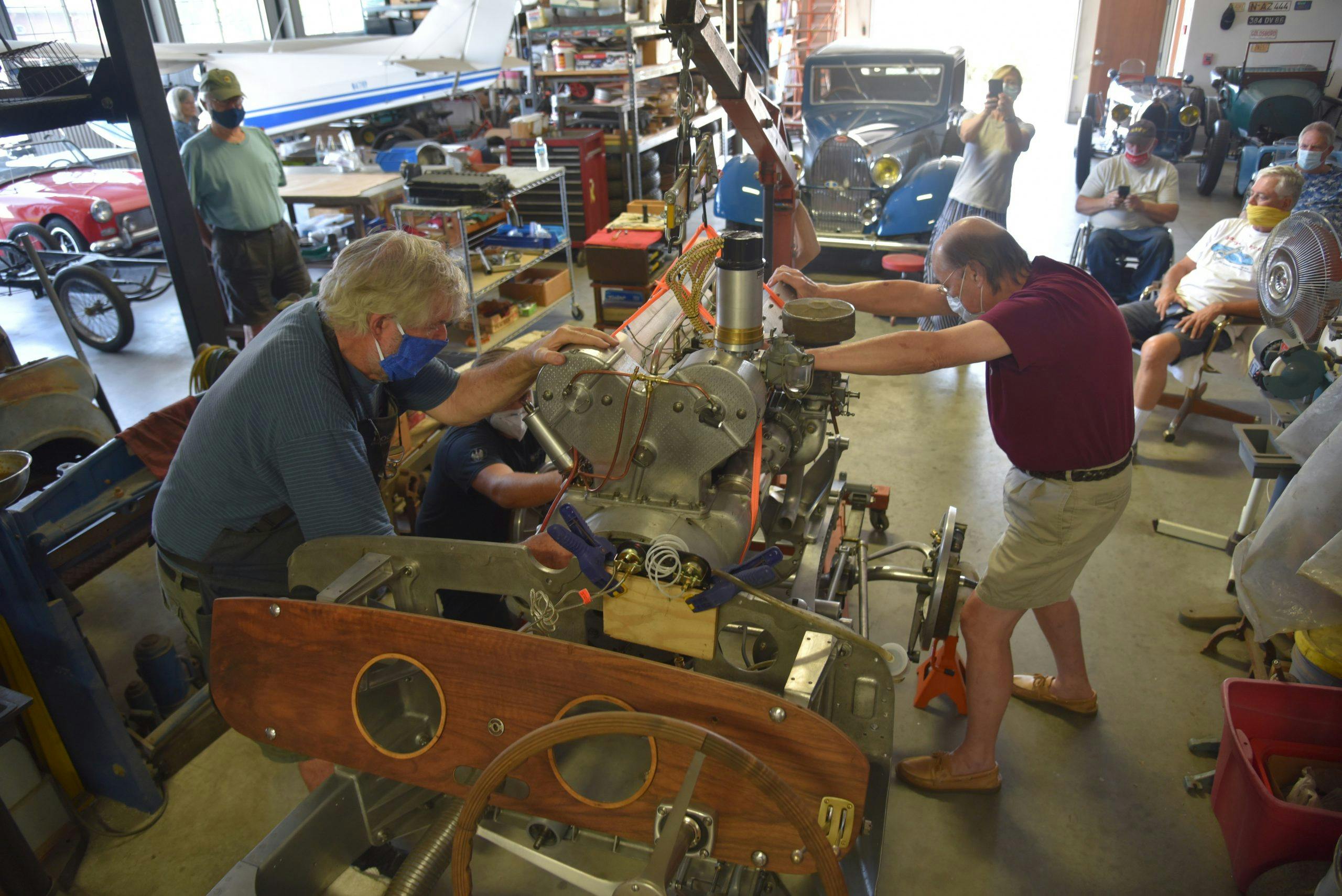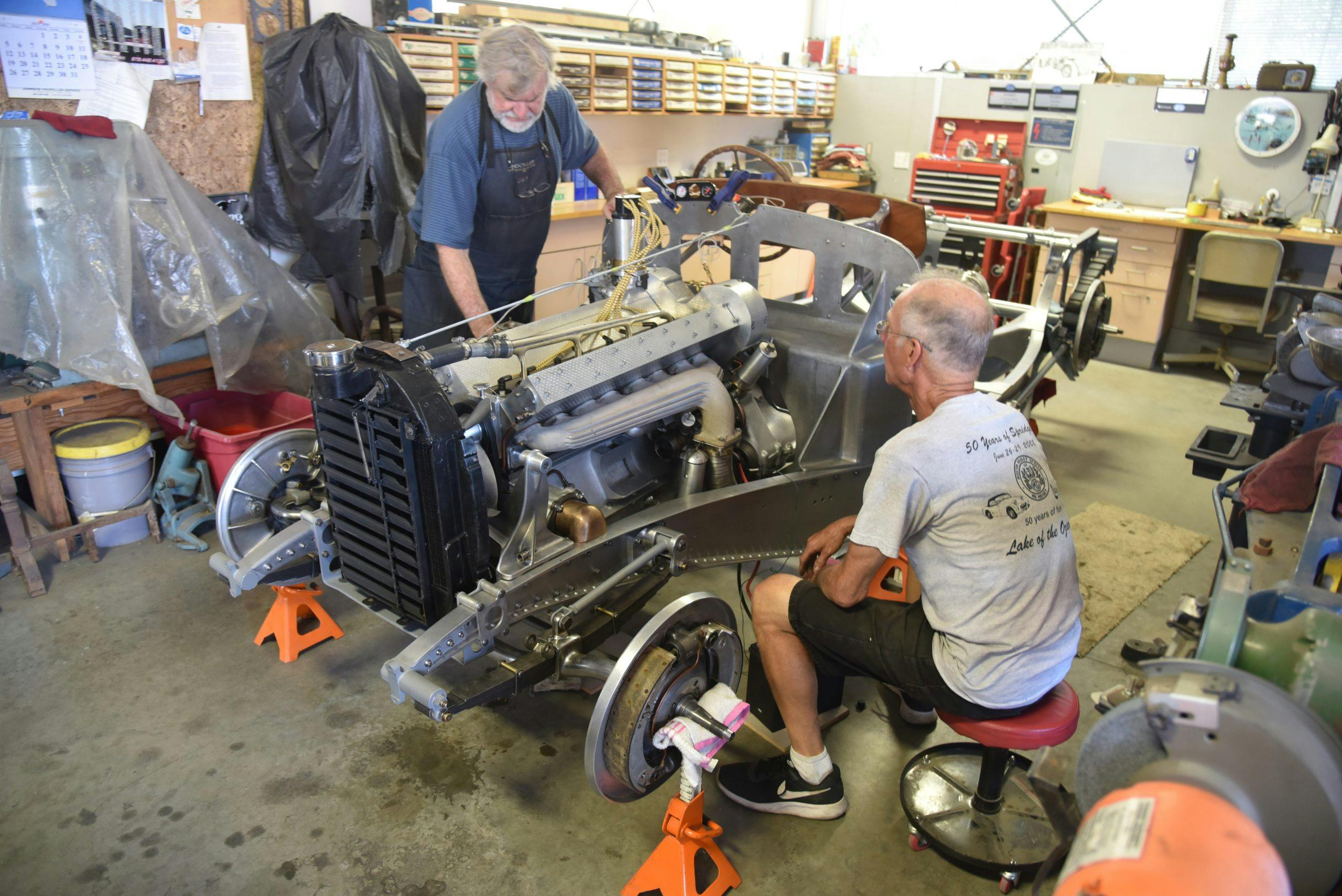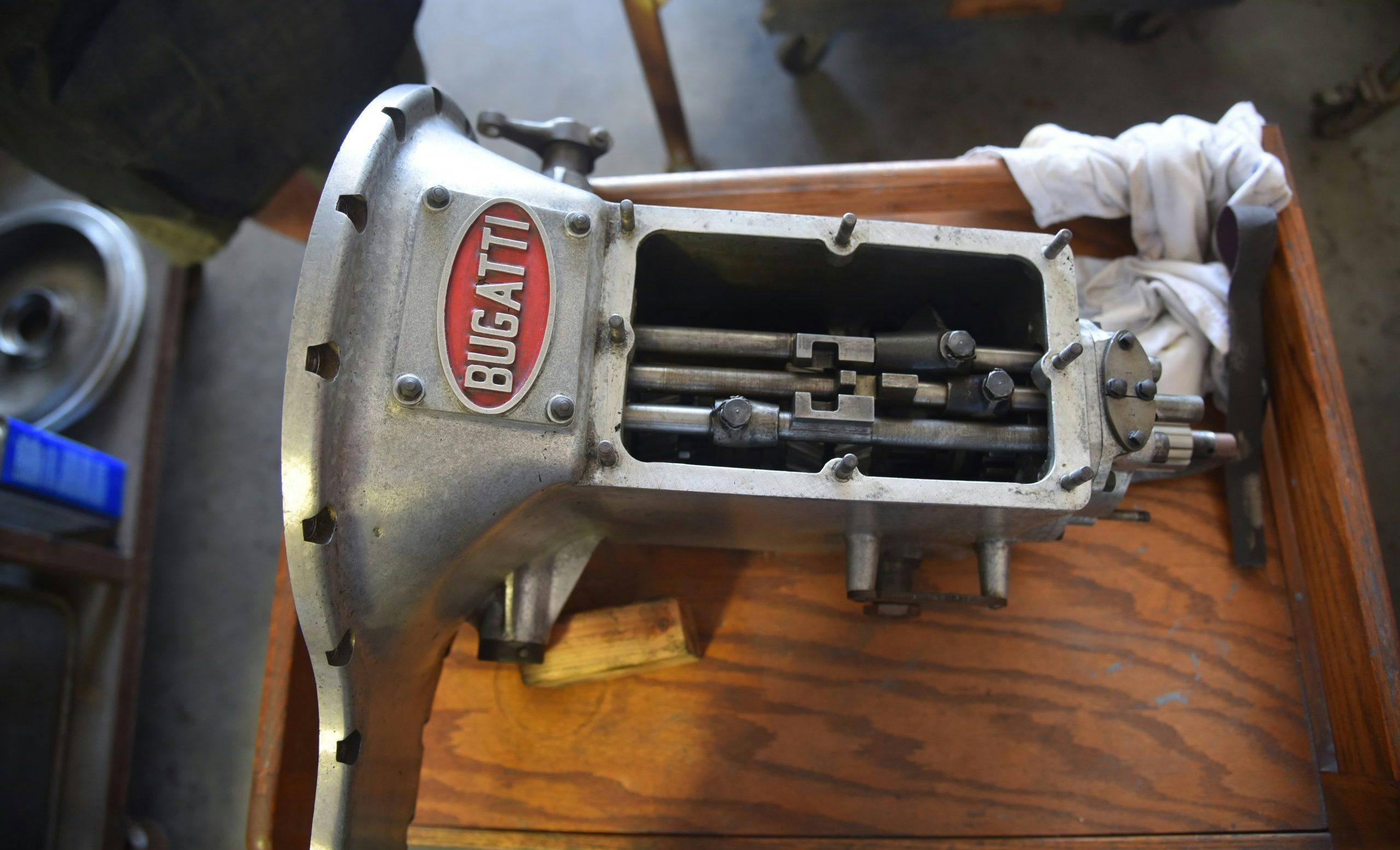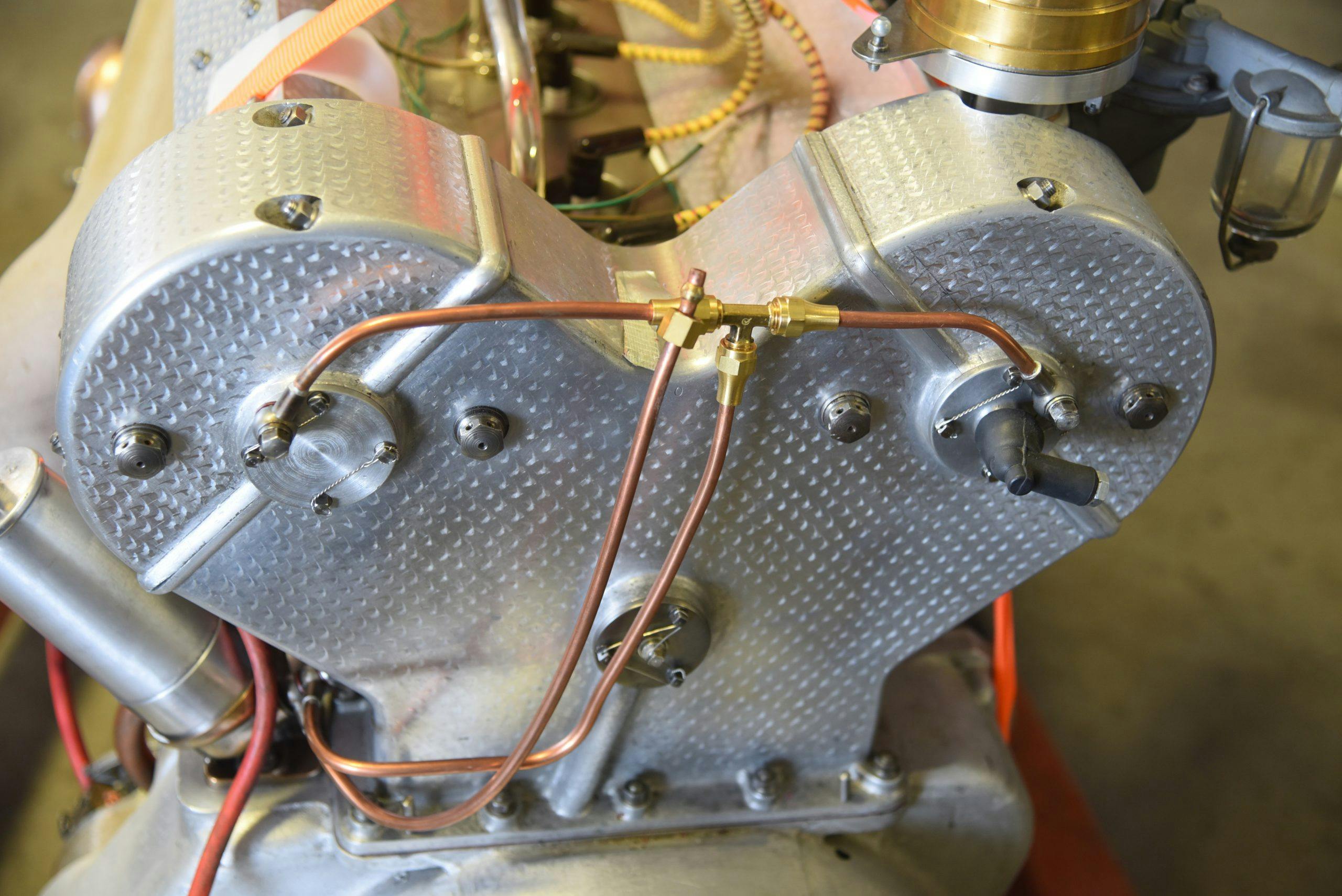A Bugatti straight-eight reuniting with its Type 64 chassis is a sight to behold
I got a text recently from one John Adams in El Cajon near San Diego, inviting me to come help shove a rebuilt engine back into a chassis. Now, anyone who has received an invite to an engine-install party knows that it can go one of several ways. The car owner can be fully prepped and the engine is ready to slide in, as if doused in Vaseline. Or there are still six jobs undone, including figuring out why the crank pulley has half an inch of play, and one penlight to be shared as darkness descends on an open driveway.
John was ready, and several neighbors pulled up lawn chairs to watch the proceedings. After all, it’s not every day that you get to witness a 3.3-liter Bugatti straight-eight being shoved back into one of the three Bugatti Type 64 chassis known to exist in the world. And the day’s agenda not only included the shoving; gas would be burned if all went well.

John and his brother, Rick Adams, own five Bugattis between them because their father, Richard Adams, got hooked on these odd French carriages back when most Americans could more easily rattle off the cast of The Dick Van Dyke Show than tell a Bugatti from beef stroganoff. As John tells it, one day in 1947, his dad stumbled on a story in Esquire magazine by one of the founding fathers of automotive hackery, Ken Purdy. It was titled “Kings of the Road,” and life at the Adams household was never the same after that. John’s dad eventually acquired nine of the machines from Molsheim.
There, in the Alsace region, toward the end of the great interwar period of art deco French styling, Jean Bugatti, son of Ettore and a self-styled artist who imbued the brand with much of its trademark flamboyance, penned the Type 64. It was meant to be another flowing, futuristic sports streamliner with a rakishly low roof punctuated by what Bugatti termed “papillon,” or “butterfly” top-hinged doors. Unfortunately, Jean Bugatti’s premature end came in August 1939 in a tumbling Type 57, and only three chassis were built. Sculptures themselves, made of curvaceous aluminum-alloy trusses bridged by exquisite cast-aluminum firewalls and crossmembers, the three chassis were squirreled away from the Nazis in various stages of completion. The first chassis received a body with conventional doors and is now in the former Schlumpf collection in France. The third chassis never had a body, until current owner Peter Mullin commissioned a wild creation for it in 2012. The second chassis sits on jack stands in John Adams’s garage in El Cajon.
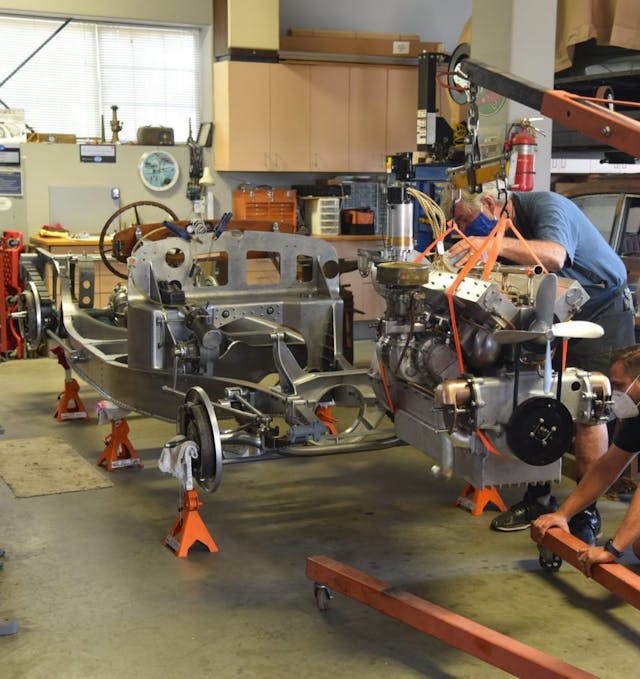
After the war, that chassis went to Belgium, where it was made drivable with a sporty boattail body from a no-name local builder. Richard Adams spotted an ad for it in a British Bugatti club rag in 1960 and bought it via letters written by hand and dropped in the mail. When the car eventually arrived after a 10,000-mile sea journey from Antwerp through the Panama Canal to the B Street Pier in San Diego, John and his dad went down, put gas in the car, and drove it home. Not long after, it needed to come apart for various reasons, and the car stayed apart until John started restoring it in 2016. “I haven’t heard that engine run in 55 years,” he told me.

It was my honor to work the hoist for a bit, slowly inching the big dual-overhead-cam unit, a gorgeous ingot of machine-turned aluminum, down and rearward until the mounting bolts could be inserted. John was ready with the radiator, some improvised hoses, and a small plastic gas tank from a lawn mower. After the hookups were made, the engine cranked, and it lit with a melodic roar from all eight cylinders. John worked the throttle with an intense face while a cheer arose from the onlookers. Mission accomplished, and in only about three hours.
It’s not drivable, though; much work is left, including pulling the engine again to fix clearance issues with the oil filler. It is, after all, just a car, with bolts that fit wrenches turned by devoted folk who cheer when an engine first breathes life. Keep an eye out—you may get a text from someone like that inviting you to a party. You should grab a mask and go.


